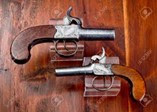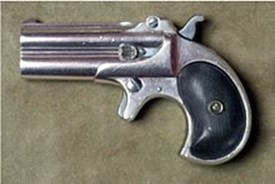By the 1800s, mostly male settlers answered the call to head west following stories that painted a picture of a land of milk and honey. A shortage of females developed as they searched for gold and plowed up the prairies building shelters out of sod. While back east, the opposite problem occurred. In many cases, answering an ad to become a mail-order bride was a literal ticket for a chance at a new life. Is it any wonder that advertisements like this became common?
 |
| Courtesy of Glacier National Park Photo Archives, photo HPF 9871. |
In 1851, One California Paper pleaded:
“We want an emigration of respectable females to California: of rosy-cheeked ‘down east’ Yankee girls—of stout ‘hoosier’ and ‘badger’ lasses, who shall be wives to our farmers and mechanics, and mothers to a generation of ‘Yankee Californians.’ ” Quoted by Chris Enss in his book Hearts West: True Stories of Mail
Travel Essentials
American Etiquette Rules of Politeness, written by Walter Houghton in 1883, gave lots of advice, and some specifically included travel: “There is no situation in which a lady is more exposed than when she travels, and there is no position where a dignified, lady-like deportment is more indispensable and more certain to command respect.” Mr. Houghton also recommended carrying a sponge, tooth and nail brushes, and soap in an oilskin bag.
William Addis designed the more modern toothbrush in England around 1780. The handle was carved from cattle bone, and the brush was made from pigs' hair. In 1844, the first 3-row bristle brush was designed. The first U.S. patent for a toothbrush was filed in 1857.
Safety- What's a Lady to Do?
A pair of pockets from the early 19th century.
Safety First- Looking Beyond Mr. Houghton's Recommendations-Pocket Pistols
The pocket pistol, also known as the Queen Anne pistol, originated in the mid-17th century as a small, concealable coat or pocket pistol. This style was used during the 18th century, evolving from a weapon reserved for the wealthy to a common sidearm in broader use as more and more manufacturers made them by the start of the 19th century.
The boot pistol was another version of the muff pistol produced from 1800 until the 1850s became popular with the Union army officers during the Civil War. These types of weapons were also frequently used by women because they were concealable in a purse.
During the 18th century, wealthy travelers concealed small single-shot pistols in the pocket of a coat as protection from highwaymen. Overcoat pistols with a turn-off barrel were designed for women to carry in their muffs or purses.
https://en.m.wikipedia.org/wiki/File:Dragoon_Baby_Dragoon.jpgAffectionately known as the "Baby Dragoon" and made without a loading lever, Colt turned out about 15,000 between 1847-1850, and the public loved them. This pocket model became the most successful of all of Colt’s percussion revolvers.
Original Remington Model 95 derringer
When tucked into a vest or coat pocket, a derringer would not produce any more of a bulge in one’s clothing than would a pocket watch. Some manufacturers marketed their small firearms directly to the ladies. In 1866, Charles Converse and Samuel Hopkins manufactured approximately 800 pistols and sold under the trade name of “Ladies Companion.”

The 19th-century vest-sized pocket pistol was the double-barrel Philadelphia Deringer. The Rimfire Remington Model 95 was widely popular and overshadowed all other designs, and became synonymous with the word "Derringer." It is estimated that 150,000 were produced between 1866 and 1935. The Remington double-barrel derringer design is still being manufactured today.
New Release:
In my upcoming new release, our heroine is on the run and as nervous as a long-tailed cat on a porch filled with rocking chairs. Regarding travel, she'll follow her cousin's advice and ask to be seated next to another woman, preferably with children or a matronly appearance, and fade right into the background.
 https://www.amazon.com/dp/B0BLZ9J2Z4
https://www.amazon.com/dp/B0BLZ9J2Z4
A hopeless romantic, Abilene is on the run again, dreaming of her happily ever after- a trustworthy and devoted husband, a house in the country, and peace.
Sheriff Mark Joseph learned the hard way that love only leads to heartache and is not worth the risk. The last thing he needs is a wife. Long work hours with a healthy dose of danger are the best antidote to a broken heart.
When tucked into a vest or coat pocket, a derringer would not produce any more of a bulge in one’s clothing than would a pocket watch. Some manufacturers marketed their small firearms directly to the ladies. In 1866, Charles Converse and Samuel Hopkins manufactured approximately 800 pistols and sold under the trade name of “Ladies Companion.”

The 19th-century vest-sized pocket pistol was the double-barrel Philadelphia Deringer. The Rimfire Remington Model 95 was widely popular and overshadowed all other designs, and became synonymous with the word "Derringer." It is estimated that 150,000 were produced between 1866 and 1935. The Remington double-barrel derringer design is still being manufactured today.
New Release:
In my upcoming new release, our heroine is on the run and as nervous as a long-tailed cat on a porch filled with rocking chairs. Regarding travel, she'll follow her cousin's advice and ask to be seated next to another woman, preferably with children or a matronly appearance, and fade right into the background.
 https://www.amazon.com/dp/B0BLZ9J2Z4
https://www.amazon.com/dp/B0BLZ9J2Z4A hopeless romantic, Abilene is on the run again, dreaming of her happily ever after- a trustworthy and devoted husband, a house in the country, and peace.
Sheriff Mark Joseph learned the hard way that love only leads to heartache and is not worth the risk. The last thing he needs is a wife. Long work hours with a healthy dose of danger are the best antidote to a broken heart.
Connect with Kimberly:
Fans of historical romance set in the late 19th -Century will enjoy stories combining, History, Humor, and Romance, emphasizing Faith, Friends, and Good, Clean Fun.

Sign up for my newsletter.

Sign up for my newsletter.
Bookbub: https://www.bookbub.com/profile/kimberly-grist
Facebook: https://www.facebook.com/FaithFunandFriends/
Twitter: https://twitter.com/GristKimberly
Amazon Author Page: https://www.amazon.com/Kimberly-Grist/e/B07H2NTJ71
Facebook: https://www.facebook.com/FaithFunandFriends/
Twitter: https://twitter.com/GristKimberly
Amazon Author Page: https://www.amazon.com/Kimberly-Grist/e/B07H2NTJ71








No comments:
Post a Comment